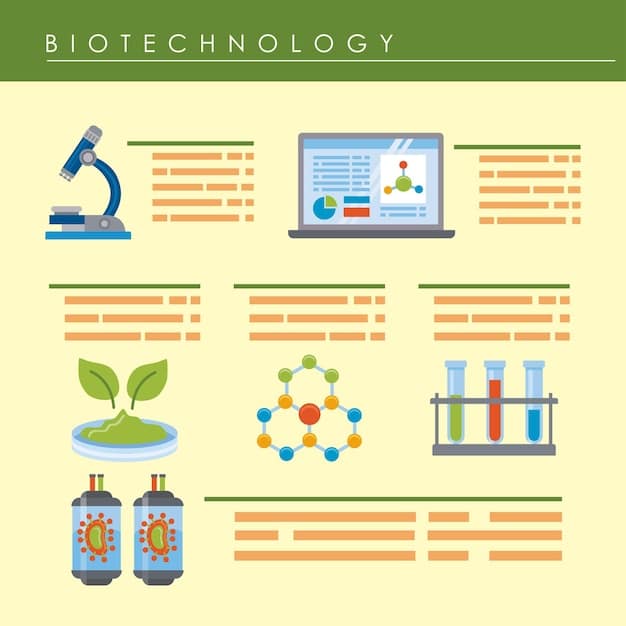Automated Testing Tutorial: Jest and Enzyme for US Developers

Implementing automated testing with Jest and Enzyme ensures robust and reliable JavaScript applications; this tutorial guides US developers through practical steps for effective testing.
Implementing automated testing is critical for building robust and maintainable applications, especially in the fast-paced world of web development. This tutorial provides a practical guide for US developers on how to effectively use Jest and Enzyme to test React components and JavaScript code, ensuring higher quality and fewer bugs.
Getting Started with Jest and Enzyme
Jest, a delightful JavaScript Testing Framework with a focus on simplicity, and Enzyme, a JavaScript Testing utility for React that makes it easier to assert, manipulate, and traverse your React Components’ output, are powerful tools for automated testing. Let’s delve into their setup and basic usage.
Installing Jest and Enzyme
First, you need to install Jest and Enzyme in your project. Using npm or yarn, you can accomplish this with a single command.
- npm: `npm install –save-dev jest enzyme enzyme-adapter-react-16 react-test-renderer`
- yarn: `yarn add –dev jest enzyme enzyme-adapter-react-16 react-test-renderer`
- Explanation: This command installs Jest as your test runner, Enzyme as your utility for testing React components, an adapter for your React version (e.g., react-16), and react-test-renderer for snapshot testing.
Configuring Jest
Next, configure Jest to work with Enzyme. This involves setting up an adapter that allows Enzyme to interact with React components during testing.
- Create setupTests.js: In your project root, create a file named `setupTests.js`.
- Add configuration: Add the necessary configuration to this file, importing Enzyme and setting up the adapter.
- Example:
import { configure } from 'enzyme'; import Adapter from 'enzyme-adapter-react-16'; configure({ adapter: new Adapter() });
With Jest and Enzyme installed and configured, you’re ready to start writing your first tests. These initial steps are crucial for setting the foundation for effective automated testing in your React projects.

Writing Your First Test with Jest
Writing your first test is a significant step toward ensuring your code functions as expected. Here’s how you can create a simple test using Jest to verify the behavior of a JavaScript function or a React component.
Creating a Test File
Start by creating a test file for your component or function. Jest identifies these files based on their naming convention.
- Naming Convention: Test files should be named with a `.test.js` or `.spec.js` extension.
- Location: Place the test file in the same directory as the component or in a dedicated `__tests__` directory.
- Example: If you have a component named `MyComponent.js`, create a test file named `MyComponent.test.js` next to it.
Writing a Simple Test Case
Now, let’s write a basic test case to verify some functionality. This example demonstrates testing a simple JavaScript function.
// myFunctions.js
export const add = (a, b) => a + b;
// myFunctions.test.js
import { add } from './myFunctions';
test('adds 1 + 2 to equal 3', () => {
expect(add(1, 2)).toBe(3);
});
Running Your Test
To run your test, use the Jest command in your terminal.
- Command: `npm test` or `yarn test`
- Output: Jest will execute your test file and provide feedback on whether the test passed or failed.
Creating and running your first test is a fundamental step in the automated testing process. It allows you to verify that your code behaves as expected and provides a foundation for more complex tests.
Testing React Components with Enzyme
Enzyme simplifies testing React components by providing a set of utilities for rendering, finding, and interacting with components. Here’s how you can use Enzyme to test your React components effectively.
Rendering Components with Enzyme
Enzyme offers different rendering methods to suit various testing needs.
- Shallow Rendering: Renders only the component itself, without rendering any of its child components. This is ideal for unit testing.
- Mounting: Renders the full DOM, including child components. This is useful for integration testing and testing lifecycle methods.
- Rendering: Renders the component to static HTML, which can be used for testing the component’s output.
Finding Elements in Components
Enzyme provides methods for finding elements within your components.
import { shallow } from 'enzyme';
import MyComponent from './MyComponent';
it('finds a paragraph with class \'my-class\'', () => {
const wrapper = shallow(Interacting with Components
Enzyme allows you to simulate user interactions with your components.
it('simulates a click event', () => {
const wrapper = shallow(Testing React components with Enzyme involves rendering components, finding elements, and simulating interactions. This enables you to verify that your components behave as expected in response to user actions and changes in state.

Advanced Testing Techniques
To ensure comprehensive testing, it’s crucial to explore advanced techniques such as snapshot testing and mocking dependencies. These methods help you catch regressions and isolate your components during testing.
Snapshot Testing
Snapshot testing involves comparing the rendered output of a component to a previously saved snapshot. This helps you identify unexpected changes in your component’s structure or content.
- Creating Snapshots: Jest can automatically create snapshots of your components during the first test run.
- Updating Snapshots: If you intentionally change a component, you can update the snapshot to reflect the new output.
- Example:
import React from 'react'; import renderer from 'react-test-renderer'; import MyComponent from './MyComponent'; it('renders correctly', () => { const tree = renderer .create() .toJSON(); expect(tree).toMatchSnapshot(); });
Mocking Dependencies
Mocking dependencies allows you to isolate your component by replacing its dependencies with mock objects or functions. This is useful for testing components that rely on external APIs or modules.
- Jest Mocks: Jest provides built-in mocking capabilities that allow you to mock modules, functions, and even entire components.
- Example:
jest.mock('./api'); import { fetchData } from './api'; import MyComponent from './MyComponent'; it('fetches data correctly', () => { fetchData.mockResolvedValue({ data: 'test data' }); const wrapper = shallow(); expect(fetchData).toHaveBeenCalled(); expect(wrapper.state('data')).toBe('test data'); });
Mastering advanced testing techniques like snapshot testing and mocking dependencies is essential for robust and reliable automated testing. These methods help you catch regressions and isolate your components, ensuring the quality of your code.
Best Practices for Automated Testing
Adhering to best practices is crucial for creating effective and maintainable automated tests. Here are some guidelines to follow when testing with Jest and Enzyme.
Write Clear and Concise Tests
Tests should be easy to understand and maintain. Use descriptive names for your test cases and keep them focused on a single piece of functionality.
- Descriptive Names: Use names that clearly describe what the test is verifying.
- Single Assertion: Each test case should ideally focus on a single assertion.
Keep Tests Independent
Tests should be independent of each other to avoid cascading failures. Each test should set up its own environment and clean up after itself.
- Setup and Teardown: Use Jest’s `beforeEach` and `afterEach` hooks to set up and tear down the test environment.
- Avoid Shared State: Avoid sharing state between tests to prevent unexpected behavior.
Test Edge Cases
Ensure you test edge cases and boundary conditions to catch potential issues. This includes testing with invalid input, empty data, and unexpected responses.
- Invalid Input: Test with invalid input to ensure your code handles it gracefully.
- Empty Data: Test with empty data to ensure your code doesn’t throw errors.
Following best practices for automated testing ensures that your tests are effective, maintainable, and reliable. These guidelines help you create a robust testing suite that catches potential issues and improves the quality of your code.
Integrating Testing into Your Development Workflow
Integrating automated testing into your development workflow is essential for maintaining code quality and reducing bugs. Here’s how you can seamlessly incorporate testing into your development process.
Continuous Integration
Continuous integration (CI) involves automatically running your tests whenever changes are made to your code. This helps you catch issues early and prevent them from making their way into production.
- CI Tools: Use CI tools like Jenkins, Travis CI, or CircleCI to automate the testing process.
- Automated Builds: Configure your CI tool to run your tests whenever code is pushed to your repository.
Code Coverage
Code coverage measures the percentage of your codebase that is covered by tests. This helps you identify areas that are not adequately tested and prioritize testing efforts.
- Jest Coverage: Jest provides built-in code coverage reporting.
- Coverage Thresholds: Set coverage thresholds to ensure a minimum level of testing.
Test-Driven Development
Test-driven development (TDD) involves writing tests before writing the code. This helps you clarify requirements and ensure that your code is testable from the start.
- Red-Green-Refactor: Follow the red-green-refactor cycle, writing a failing test first, then writing the code to make the test pass, and finally refactoring the code.
- Clear Requirements: TDD helps clarify requirements and ensures that your code meets those requirements.
Integrating testing into your development workflow through continuous integration, code coverage, and test-driven development ensures that testing is an integral part of your development process. This leads to higher code quality, fewer bugs, and more maintainable applications.
| Key Point | Brief Description |
|---|---|
| 🛠️ Setup Tools | Install Jest, Enzyme, and configure the adapter for React testing. |
| ✍️ Write Tests | Create test files and write test cases to verify your JavaScript functions and React components. |
| 🧪 Run Tests | Use the Jest command to execute your test files and check for failures or successes. |
| ✅ Best Practices | Follow clear test writing, independence, and edge case testing for robust automation. |
Implementation Questions
▼
Using Jest and Enzyme together provides a comprehensive testing solution for React applications, allowing developers to easily write, run, and debug tests, ensuring code reliability and quality.
▼
You can mock external dependencies using Jest’s built-in mocking capabilities, replacing external modules or functions with mock versions to isolate your component and control its behavior during testing.
▼
Enzyme offers shallow rendering, which renders only the component itself, mounting for full DOM rendering including child components, and rendering to static HTML for output assertions.
▼
You can use Jest’s code coverage reporting to measure the percentage of your codebase covered by tests, set coverage thresholds, and prioritize testing efforts to increase coverage.
▼
Continuous integration automates the process of running tests whenever changes are made to the code, helping catch issues early and prevent them from reaching production, ensuring ongoing code quality.
Conclusion
Implementing automated testing with Jest and Enzyme empowers US developers to build robust and reliable React applications. By following this practical tutorial, you can integrate testing seamlessly into your development workflow, ensuring higher code quality and fewer bugs. Embrace automated testing and elevate your development practices.





